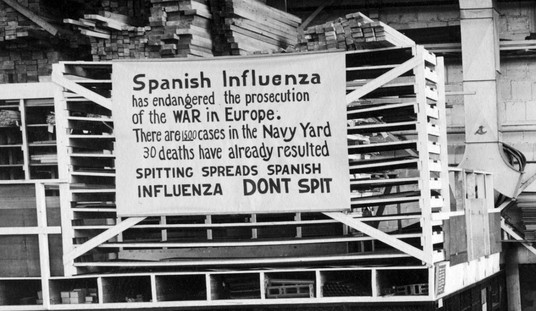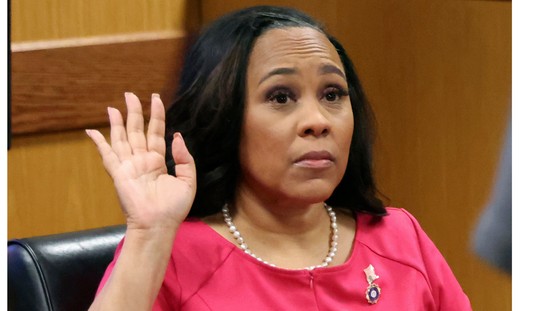You know the answer to the question in the headline. Of course the media has a “bad news bias.” I wrote about it myself a few weeks ago in the context of the strange under-coverage of newly vaccinated senior citizens finally reuniting with their grandchildren after a year in isolation. The emotional pull of stories like that should have made them a staple of TV news coverage in March, as more Americans got their shots. There was even a partisan angle in it potentially for our fair-and-balanced press: “Look at the joy Joe Biden’s vaccine program has brought back to our country!”
As it is, a month on, I still haven’t seen any news segments like that. The closest we’ve gotten is occasional print pieces by or about senior citizens describing their relief at being able to reenter society safely. Good stuff — but not enough.
David Leonhardt of the Times has noticed the grim tilt in COVID coverage as well. It’s a recurring theme for him of sorts: He also wrote the widely circulated piece back in January about how scientists and media outlets “undersell the vaccine” by foolishly asking vaccinated people to continue taking maximum precautions for the foreseeable future. Leonhardt got hold of a new study analyzing media coverage of the pandemic in the U.S. among a variety of sources to see if it confirmed his suspicions. Result: Yep, even allowing for the fact that news coverage of a deadly disease is destined to skew gloomy, American media is really gloomy compared to foreign counterparts. And national media in the U.S. is gloomy compared to local counterparts.
The coverage by U.S. publications with a national audience has been much more negative than coverage by any other source that the researchers analyzed, including scientific journals, major international publications and regional U.S. media. “The most well-read U.S. media are outliers in terms of their negativity,” Molly Cook, a co-author of the study, told me.
About 87 percent of Covid coverage in national U.S. media last year was negative. The share was 51 percent in international media, 53 percent in U.S. regional media and 64 percent in scientific journals.
Notably, the coverage was negative in both U.S. media outlets with liberal audiences (like MSNBC) and those with conservative audiences (like Fox News).
To visualize:
National U.S. publications and TV networks cover Covid news much more negatively than foreign media, scientific journals or regional media within the U.S.
Why? 🧵https://t.co/LXYwODqZDM pic.twitter.com/iguKLDqr6O
— David Leonhardt (@DLeonhardt) March 24, 2021
What’s going on to make American media such eeyores? I think there are at least five separate forms of bias possibly contributing.
1. Consumer bias. The media wants to attract eyeballs because that’s good for its bottom line. Even non-journalists know the phrase, “If it bleeds, it leads.” And that holds true for COVID, according to the study Leonhardt cites. The negative stories about the pandemic got more clicks on Facebook than the positive ones did, which may explain why national media is playing up the bad news even relative to scientific journals. As for why news consumers are focused on the negative more than the positive, for some it may be sensationalism — headlines about “death tolls” always grab readers — but for others it may be risk management. If you’re worried about COVID, you want to know the latest bad news about spiking infection rates or case counts ASAP so that you can curb your behavior outside the home accordingly.
2. Industry bias. Leonhardt has a sound theory about this: “In the modern era of journalism — dating roughly to the Vietnam War and Watergate — we tend to equate impact with asking tough questions and exposing problems… Our job is to cut through the self-promotion and find the truth. If we don’t tell you the bad news, you may never hear it.” The pandemic’s been the biggest story in the world for a year and the United States has the highest death toll from it of any country by far. It’s a national catastrophe, one made worse by major mistakes from federal and state leaders. Between the impulse to hold politicians (well, some politicians) accountable, the recurring waves of infections, the public interest in up-to-date risk assessments, and the endless uncertainty about how the virus transmits and why some have severe symptoms while others don’t, it’s an endless banquet of not just bad news but important bad news. And the modern media’s top obligation, as Leonhardt says, is to bring you important bad news.
3. Expert bias. Part of the reason the press is so relentlessly pessimistic is surely because the federal COVID brain trust, most notably Anthony Fauci and Rochelle Walensky, are hyper-cautious in their advice to the public. I don’t think I’ve seen either of them ever encourage Americans to increase their socializing in response to lower levels of cases, and in Fauci’s case that stretches back more than a year. Partly that’s because the U.S. has never reached the sort of baseline in case counts that would make public-health experts more comfortable with seeing people reemerge from isolation. Fauci’s said from the beginning that things won’t truly be safer until we’re down to a few thousand infections nationally per day, a level we’ve never approached since last March. The media, not wanting to confound the expert guidance, naturally takes its cue from that. If Fauci and Walensky say things are unsafe, then the message that things are unsafe must be carried forth.
4. Influence bias. Related to the last one, the media knows how much its reporting might potentially influence people’s behavior. They also know that some cohort of Americans will ignore the expert advice and start socializing again in response to declining case counts even if those counts haven’t declined to “safe” levels. And so the press, not wanting to encourage that, may accentuate the negative in order to try to scare consumers back into taking proper precautions. Fauci and Walensky have played the same psychological games with Americans, purposely skewing their advice towards extreme caution — even for vaccinated people — because they know that relaxing their guidance will be treated by some who haven’t been vaccinated yet as a license to party. Like them, the media doesn’t want to encourage any new outbreaks by sending “the wrong signals.”
5. Partisan bias. Nate Silver noticed something interesting about the graph Leonhardt posted:
Is it the Pfizer vaccine results that's the inflection point here—when COVID media coverage begins to become less negative—or is it the presidential election on 11/3? Hard to tell but if anything, the election would seem to line up slightly better with this data. https://t.co/nakOHeDJ8G
— Nate Silver (@NateSilver538) March 24, 2021
Did the media stop (or at least slow down on) accentuating the negative once their nemesis had lost his reelection bid? Not totally, of course: This past weekend headlines were circulating about a rise in cases in 21 states despite the decline nationally and the huge strides we’ve made in vaccinating adults. There’s still plenty of coverage in the Biden era to bum you out. And Leonhardt reiterated the point on Twitter that negativity was seen in COVID coverage from both liberal and conservative outlets. But could the media’s anti-Trump posture have made them perhaps a wee bit eager to highlight the previous administration’s failings? The question answers itself. (Our own archives contain dozens of posts about Andrew Cuomo’s massive failings on the pandemic, coverage that’s also driven partly by partisanship.) Polling also shows that liberals tend to treat COVID as more of a threat than conservatives do, to the point where they’re under grossly mistaken impressions about how many people have been hospitalized for the disease. It stands to reason that an industry populated by liberals will also reflect liberal sensibilities about the pandemic, starting with doomsaying and hyper-caution.
You know we’ve reached a bad point in media negativity when even Walensky is starting to worry about it. I’ll leave you with this.
The @CDCDirector is also offering this health advice on a press call full of people who absolutely are not doing this: "Take breaks from the news and social media. While it's good to be informed, hearing about the pandemic all-day, everyday can be upsetting." pic.twitter.com/j1GAN64qwc
— Josh Wingrove (@josh_wingrove) March 24, 2021








Join the conversation as a VIP Member